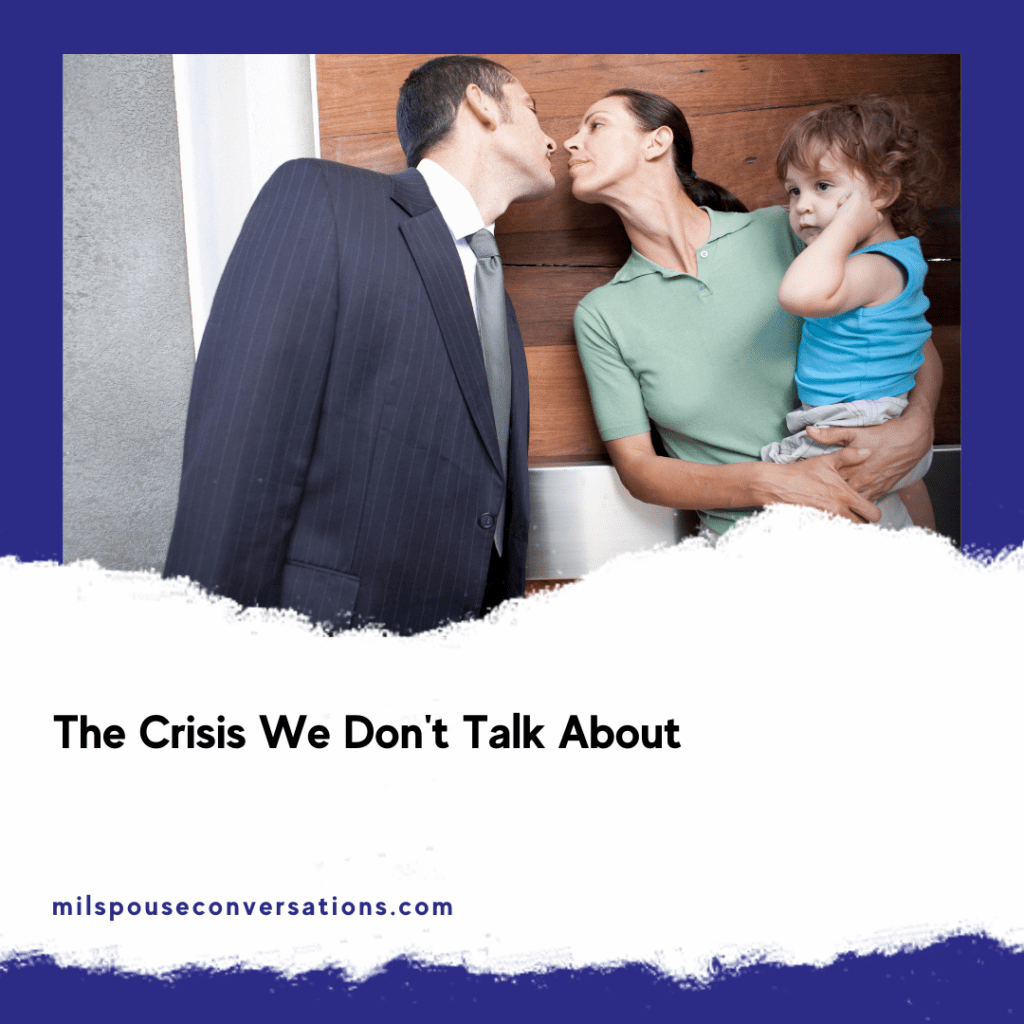
There is something about getting older, about reaching the middle part of life. It’s like an irrevocable feeling of the passage of time and the knowledge that every decision that one has made in life has brought them to this point in time, for better or for worse. There is this singular moment in time when the question arises: “Am I happy with my life?”
For many people, this question comes during a passing moment maybe at the office or on a ride to work. Or maybe the thought occurs during a dinner party or social engagement where the hosts seem overly happy or seem to have accomplished so much during their lives so far. Most times these thoughts and feelings pass by, and we get back to our regular lives and busy schedules without lingering on them.
Then there are times when these thoughts can persist and drag us into an endless well of despair. They can even lead to a deep depression and cause a crisis within ourselves. This crisis can happen to anyone at any time in life, however, during middle age things just seem so much more permanent, much more definite, and much more inescapable. In youth, these feelings and thoughts are met with headstrong determination and a willingness to get out and reach our everchanging goals and desires. Then somewhere along the way we get into a routine or fall into a rut that can lead to an almost robot-like existence where fun and happiness have fallen off the cliff of duties and responsibilities. For those of us who have fallen into this well of despair at some point or another, it can be no easy task to climb ourselves out and get back to living our day to day lives. Sometimes there is no going back to our daily life as it existed before these thoughts permeated our existence, things cannot be reconciled, and this is where the crisis begins.
Midlife Crisis In Our Society
When we talk about midlife crisis in our society it is often attributed to men who have worked their way to middle life just to find themselves unhappy and unfulfilled in both working and home life. The portrayal is of a man who buys a new expensive car or leaves his wife for a younger woman, or sometimes he might quit his lucrative job to pursue a new career path, all which can lead to personal and financial ruin if he doesn’t overcome his crisis in time. Although this is the prevailing theme surrounding this subject, men aren’t the only ones affected by this crisis, and neither is it isolated to people who have a job outside of the home. While the stereotypical midlife crisis happens in plain sight and full view of everyone in the working individual’s life, there is a more silent and deadly crisis that happens in the lives of those who act as the support system for families and communities. The only witness is the person going through the ordeal and maybe close friends or family members. These are the people who have devoted their lives to caregiving and homemaking, the stay-at-home community.
For the most part, people in the stay-at-home community are seen as happy helpers who are sources of support and love for those who are leaving the home every day to go to work and attend school. It is assumed that these people are most happy when they are giving their time in support of others and that homemaking is their life’s passion, and some of them are, while others may silently struggle. Staying at home and tending to the family may seem like an optimal life of leisure time and relaxation, however, in real world scenarios there is often little time for either. The ongoing hectic schedules involved and the constant work of maintaining a home can lead to burnout and fatigue that may be disregarded by other members of the family due to the perception that people who stay at home have an easier time than those who are going to jobs every day. The person staying at home, however, usually has just as much work as those working outside of the home.
Due to the nature of caregiving and homemaking, some people may find themselves becoming isolated in the home with a lower chance for the social interaction that naturally occurs when working outside of the home. Other times the workload in the home may far exceed the capabilities of one person leading to a loss of social time as daily chores and duties overtake their personal time. Excessive work and social isolation can cause mental strain and physical distress that is not seen by family members until things are out of control for the individual experiencing the crisis. Due to the stigma involved in speaking out about these situations many suffer through their ordeal in silence or passive aggressive expressions of frustration or anger that do little to alleviate the crisis. The duties and responsibilities of caring for a family entail taking on several roles that have an occupational equivalent, and the lack of proper care for the wellbeing of the caregiver can lead to increased stress and burnout. In some cases, the person does try to reach out for help or express their unhappiness with life, and it is met with indifference or misunderstanding because it is perceived as nagging or complaining.

On the other hand, their working counterparts are allowed to express feelings of dissatisfaction at work and will receive advice to change jobs, seek a promotion or move to another department at work for a change of pace. And yet, these options are unavailable to the stay-at-home community. When managing a household there are many jobs and responsibilities that come with the territory among which are cooking, cleaning, creating budgets and grocery lists, tending to children’s schedules and wellbeing, running errands, and let’s not forget all the things that come with each new school year.
There is a lot going on; the life of a stay-at-home partner and this community often have a robust working life that has no salary or employee reward incentive program as their working counterparts may have in the workplace. In addition, for the most part there are no other workers to assist in carrying out these daily tasks, which also a difference between working in the home and working outside of the home. Imagine telling the cleaning staff at a hotel that they will need to do that work with no pay, indefinitely. Imagine also telling the cleaning staff the kitchen staff was let go and now they will have to perform those tasks without pay also. On top of this let those same staff members know they will also be running the hotel shuttle service, and the result will be a hotel without any workers because no one would stand for this in working life. And yet, there is no hesitation in asking homemakers to make these choices and abide by this system.

Most people working outside of the home go to jobs where other coworkers are there to assist with daily tasks and responsibilities. It is seen as fair to expect those coworkers to do their jobs lest everyone complain about them and hope they are fired and replaced with more productive people. Yet, in some homes, there is the perception that one person can manage the entire situation with little to no help. Add to this, the perpetual nature of the work in question and there is a real chance for burnout and breakdown. In the case of working outside of the home, workers are often offered incentives to increase productivity and improve employee morale. Most businesses want their workers to feel happy and place an emphasis on work-life balance. The stay-at-home community should be afforded the same sentiment. Care and concern for individual wellbeing and support is important for maintaining optimal health, both mental and physical because physical ailments can be caused by a lack of internal mental wellbeing.
Another dimension to the stay-at-home life is the expectation of tasks accomplished. Sometimes a feeling of endless work and endless working hours can develop over time. For those working outside of the home, there is a chance to find another job or relocate, however, the stay-at-home community does not have these types of options which can lead to a feeling of the perpetual day that never ends. While this may also be the case for some workers in certain occupations where tasks are redundant from day to day, thinking back to hotel workers as an example who complete the same tasks every day, the difference is that those workers those tasks in a service-related industry where they are paid a salary. In the home, the primary caregiver performs many of the tasks and most of the workload, which can lead to increased levels of stress and fatigue causing an increased likelihood of burnout. And this can especially be the case when there is no incentive driving the work, as every corporation has learned and yet we overlook the stay-at-home community when it comes to this notion of providing value for workers. Intrinsic value can only go so far.
Factors Causing The Feelings of Isolation, Lonelines and Under Valued
Burnout and fatigue are two factors that can cause a person to experience feelings of isolation, loneliness, and a sense that their time is not valued as highly as others in the society at large, which can greatly damage perceptions of self-worth and lead to lower self-esteem.
In such cases, this can be a catalyst for crisis that can easily be unrecognizable as the person makes every attempt to keep it together and maintain the semblance of normality and happiness for the sake of appearance. Unlike their working counterparts they may be told things such as, “You should be grateful”, “It’s your mindset, stop being negative”, or “Happiness starts inside of yourself”, and other sayings that only serve to minimize and dismiss a very real crisis that is silently brewing. The crisis that occurs due to the questioning of one’s purpose can be debilitating, especially if the one going through the ordeal does not seek help or cannot seek help from a professional. Expecting caregivers and homemakers to move on and push through their feelings in silence is a danger to the mental and physical health of our society at large.
All of this is not to say that life for those in the stay-at-home community cannot be fulfilling or satisfying. On the contrary, stay-at-home life can be both fulfilling and rewarding both intrinsically and extrinsically. It is up to us all to care and uplift this community and address the disparity between our perceptions of stay-at-home work versus work done as an employee in a workplace. Removing the stigma of mental health when it comes to the stay-at-home community would also go a long way to improve the well-being of this community and create a sense of appreciation for those who have chosen, either by necessity or desire, to stay at home and provide the love, care and support we all need to be successful. Our stay-at-home community provide just as much value to our society as the working class, because without them we would have no foundation.
So, when you see a caregiver or homemaker struggling, please stop before you attempt to assuage their legitimate concerns about the meaningfulness of their lives. Try not to dismiss their struggles with an attitude of they could have it worse.
Whatever someone is going through at any given time is important to them and reminding them it could be worse does not help address the issues they are presently experiencing.
Finding an experienced counselor or mental health professional can be an important lifeline in dealing with the struggles of mental crisis.
If they are your caregiver or homemaker, providing an atmosphere where teamwork and family participation in the home is encouraged can increase the wellbeing of the entire family. Try to consider what your job would be like without teamwork and personal accountability, and if these are things you value at work, it would be a great idea to implement these same values at home.
We are all in this together, and we can support each other whether we stay at home or go out in the world to work, we all have something to contribute to the world and all our lives have value and meaning.
Did you enjoy this article? Find it useful? Supportive? Encouraging? Entertaining? Your support of a small donation helps us bring and continue to grow Military Spouse Conversations – THEE Conversation. 💋CONVOLICIOUS💋- The Crisis We Don’t Talk About - October 18, 2021
- We See You. You matter. - October 16, 2020
- Dear Future Friend, I Love You, But I Don’t Want To Be Your Friend Yet - October 9, 2020


